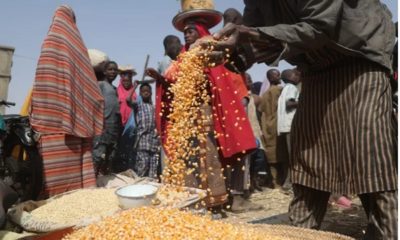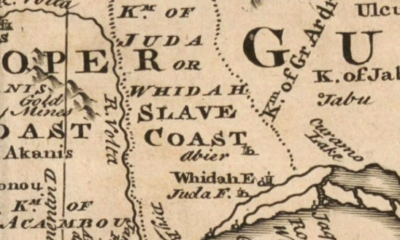News Africa
Africa is at risk due to environmental factors

As the natural environment degrades, environmental problems are produced not only by incorrect use of natural resources, but also by unreasonable exploitation, overpopulation of states, low population incomes, and unemployment.
The high rates of population reproduction connected with the increase of acreage and pastures, the expanding number of towns, and the excessive and irrational use of natural resources represent the state of the natural environment in African countries.
Reduced soil fertility, faster erosion, deforestation, growing water scarcity, poor surface water and air quality, cutting down evergreen forests, and disappearing plant and animal species are among Africa’s most pressing environmental issues today.
Other factors contributing to environmental issues include state poverty and a disregard for environmental implications. Pollution and dirty industry have a negative impact on African countries. Food, farming, and animals are all affected by environmental degradation.
The Sahel, a massive natural area stretching 400 kilometers south of the Sahara from the Atlantic to Ethiopia, is a good example of an environmental crisis in Africa. The Sahel is a semi-desert transition zone between deserts and savannas.
The isoline of annual precipitation amounts of 100–200 mm marks the northern boundary of the Sahel, whereas the southern boundary is 600 mm. The average temperature in this area is + 27… + 29 degrees Celsius. Summer is hot and humid, and 80–90 percent of the precipitation evaporates quickly.
The dry season lasts 8-10 months. The main type of economic activity over the centuries has been nomadic and semi-nomadic cattle breeding. During the wet season, cattle graze in the north of the Sahel, and in the dry season, it is distilled to the south.
The dry season lasts for eight to ten months. Nomadic and semi-nomadic cattle breeding has been the main source of income for millennia. Cattle graze in the north of the Sahel during the wet season, and it is distilled in the south during the dry season.
In the twentieth century, this usage of land resulted in a breach of the ecological balance, resulting in an increase in the area of deserts and the movement of deserts to the south at speeds of up to 10 kilometers per year, desertification, and the transformation of dry lands into desert.
Forests are being lost due to unintentional deforestation for fuel and precious timber. 90 percent of Africa’s evergreen coastal rainforests have vanished. Evergreen forests, for example, are only found in isolated pockets of Madagascar’s east coast.
The scarcity of fresh water in Africa is a major issue. To alleviate the problem, experts have proposed a number of watering projects, including one in the Sahara region. There are plans to divert the Congo River to the Sahara and build enormous reservoirs on the site of historic lakes in the Sahara and Chad.
The occurrence of rapids on African rivers allows for the construction of enormous reservoirs to be used to irrigate drylands. The Kariba and Nasser reservoirs on the Zambezi River and the Nile River, respectively, are instances of smart use of African surface water.
African countries’ national parks are working to safeguard wildlife. Specially protected zones are created for these objectives. The first national parks in Africa appeared at the turn of the twentieth century: Albert, Virunga, Serengeti, Rwenzori, and so on.
Following independence from colonial rule, 25 new national parks were established at once, and by the turn of the century, protected areas amounted to more than 7% of the country’s total area. Kenya is the country with the most national parks (15 percent of the area).
Tsavo National Park is the largest in the area, covering more than 2 million hectares and home to lions, rhinos, giraffes, Kafa buffaloes, and 450 bird species. Elephant herding is the park’s most famous feature. Savannahs and South African animals are protected in South Africa.
Timber exports in Africa offer significant revenue for many African governments, yet the continent confronts serious threats, such as deforestation.
Because Westerners flock to the region in search of high-quality timber, the acreage of tropical forests has shrunk dramatically. African leaders must devise strategies to safeguard our continent, since continued tree cutting will have a negative impact on both the population and the ecology.
-

 Lifestyle3 weeks ago
Lifestyle3 weeks agoRoad Safety Authority narrates how buttocks causes road accident
-

 GENERAL NEWS1 month ago
GENERAL NEWS1 month agoWhy 15 police officers stormed Owusu Bempah’s church – Kumchacha narrates
-

 GENERAL NEWS3 weeks ago
GENERAL NEWS3 weeks agoWatch how Ibrahim Mahama rode Honda superbike to pay last respects to late friend
-

 GENERAL NEWS1 month ago
GENERAL NEWS1 month agoHow Offinso residents storm destooled queen mother’s house, demand for new chief
-

 South Africa News4 weeks ago
South Africa News4 weeks agoWoman thrown out of a speeding taxi while on her way to work
-

 GENERAL NEWS7 days ago
GENERAL NEWS7 days agoDeadly clash between youth and navy personnel results in two deaths at Tema Manhean
-

 SHOWBIZ KONKONSAH1 week ago
SHOWBIZ KONKONSAH1 week agoJunior Pope’s Death: Video of John Dumelo refusing to join canoe for movie shoot over safety concerns resurfaces
-

 News Africa2 months ago
News Africa2 months ago‘Satanically dubious’ – SCOAN releases statement on BBC’s report about TB Joshua, church


















